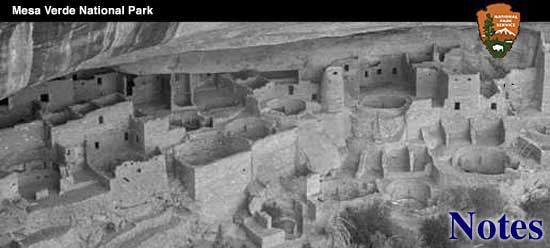

|
October 5th marked the end of one of the Navajo healing ceremonies which took place on the reservation southwest of Shiprock, New Mexico. Such an occasion will draw 1500 to 2000 Navajos to the place. A stranger passing through this section and taking time out to observe one of these ceremonials, which continue for nine days and nights, is treated to one of the most impressive and exciting events. A variety of singular and interesting occurrences attend this great event—mythological rites, gambling, horse and foot racing, general merriment, and curing the sick, the latter being the prime cause of the gathering. A man of distinction and wealth with many rich relations was critically ill. Only a person of considerable means can afford a ceremony so elaborate. All those who attend must be fed and taken care of, presents to the medicine man and his assistants must be at hand. A celebrated theurgist named "Claw" officiated at the ceremony. The first four days of the ceremony is taken up by sweat baths and medicinal treatments of concoctions made from herbs. A special medicine lodge is constructed. They then built four sweat houses on four consecutive mornings, about the great central medicine lodge, facing toward the four cardinal points, and all facing toward the east. At the end of the fourth day all hands participated in a feast. On the fifth day the first of the four sand paintings is constructed, followed by a new and more elaborate one for four consecutive days. These intricate designs are worked out on the floor of the lodge by using various colored sands. The sand is spread by the thumb and fore finger and one marvels at the fineness of the lines. Each evening as the sand painting is completed the invalid seats himself upon the central figure of the painting, and the song priest starts the chant by with a gourd rattle.
The final decoration of Masks with ribbons, plumes, etc., began at sunrise of the ninth day and continued most of the day. At dusk four immense fires were started along the line where the great dance was to take place. Navajo men and women, bedecked in their bright colored blankets, silver and turquoise, gather about each fire. Logs were piled five or six feet high. The invalid and song priest take seats in front of the great lodge. Six male dancers take part in the first of the many series of dances. The men's bodies were painted white and were nude, excepting the silk scarfs and mountain lion skins worn around the loins. They carry a pine twig in the left hand and a gourd rattle in the right hand. On first entering the dancing lane the six males come from east toward the west. The rattle is shaken by all and is the signal for a peculiar back motion of right arm and body facement to the north. The arm is brought forward in a circular undersweep and they all let out a shrill hoot. They then bend towards the south and repeat the performance. The dance starts in single file, the men raising only their right feet to any height, and balancing on the left feet. Time is kept by the gourd rattle and the men sing a weird chant. This dance is repeated a number of times, and then some Navajo men dressed as squaws, with masks, come in and take part. The movement changes, closely resembling the old-fashioned Virginia reel. Other dances follow, some very clownish and upon occasions only four men dressed as women appear. The last dance closed at the first light of the new day. Thus passed a never to be forgotten sight. Two sections of this sacred Yebitchai dance are put on, by the Navajos each evening, in the park following the regular campfire lecture. Though costumes are lacking, one never fails to be impressed. The seriousness of the dance is revealed by the set faces and complete abandon of the dancers. For a more detailed description of the Ceremonial of Hasjelti Dailjis and Mythical Sandpaintings of the Navajo refer to the article by James Stevenson in the Eight Annual Report of the Bureau of Ethnology. -oOo- | ||||||
| <<< Previous | > Cover < | Next >>> |
vol1-1d.htm
14-Oct-2011